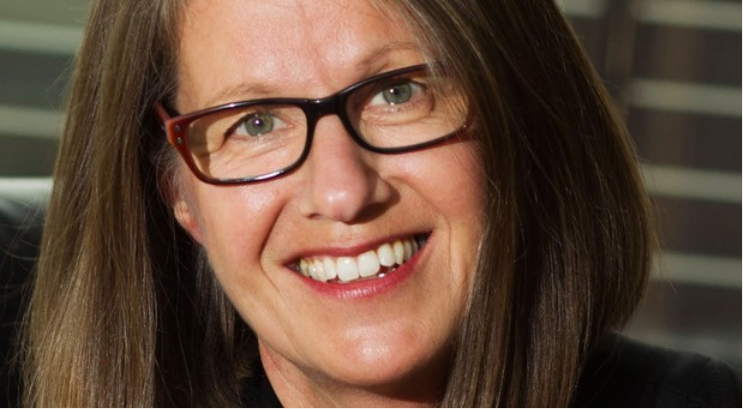Outimaija Mäkitie, Professor at the University of Helsinki, is receiving the 2018 Novo Nordisk Foundation Advanced Grant of DKK 10 million. Her research project will examine the genetic and metabolic causes of osteoporosis. The results should make diagnosis and developing treatment methods easier for doctors.
Increasing evidence indicates that not only external and lifestyle factors but also a person’s genes influence the risk of developing osteoporosis. Women past the age of menopause account for most cases, but children and adolescents can also develop osteoporosis. The recipient of the 2018 Novo Nordisk Foundation Advanced Grant, Outimaija Mäkitie, Professor of Paediatric Endocrinology, University of Helsinki, will examine the genetic factors in families in which one or several members develop osteoporosis at an unusually early age.
“We know that specific genetic variants increase the risk of osteoporosis. However, no actual genetic markers are available in clinical practice to identify who is in the high-risk group,” explains Outimaija Mäkitie.
Accordingly, the research focus will be on a field that is lagging somewhat in approaches using genome-wide association studies because, although several large cohort studies of individuals with osteoporosis have been carried out, the picture of the involved genetic variants is still sketchy.
Today, the diagnosis of osteoporosis at a young age is usually made after recurrent bone fractures. The diagnosis is based on DXA scanning, radiographs, laboratory tests and, in selected cases, on bone biopsies. The clinically used genetic studies include a search for mutations in the known candidate genes. However, a genetic test does not always provide the answers.
One way of revealing previously unknown genetic factors is to examine a relatively small group of children or young adults that display clear signs of osteoporosis and to use more extensive genetic studies, including whole-exome and whole-genome sequencing in the carefully evaluated families. By comparing the genetic variants in the affected and healthy family members, Outimaija Mäkitie and her group hope to identify new genetic variants that influence the development of osteoporosis.
Further studies of bone cells
“We chose this project because of its excellent science. The clinical potential is very high. People with early-onset osteoporosis will directly benefit, but the results can also probably benefit the general population,” explains Anna Krook, Chair of the Novo Nordisk Foundation Committee on Endocrinology and Metabolism, which selected the project from among the applications submitted to the Foundation.
“In addition to identifying new genes that play a role in osteoporosis, the research group will use information collected from mouse models to study how these genes function at the molecular level, how bones develop, what makes them strong and what increases bone density. Boosting a field within endocrinology that we do not know that well is important,” adds Anna Krook.
Bone cells have different tasks. Some build new bone tissue and others break it down. Bone tissue is therefore not static and is constantly renewed, enabling healthy bone tissue to replace older tissue.
Numerous cellular pathways and hormonal factors regulate the balance between formation and breaking down. However, aberrations in these processes sometimes cause more tissue to be broken down than is formed, which results in osteoporosis. Further, when bone formation is reduced or the proteins produced by the bone cells are abnormal, the amount of healthy bone tissue is reduced, which leads to bone fragility.
“Knowledge about these metabolic pathways is still incomplete. If we can reveal the mechanisms behind bone metabolism in greater detail, this may pave the way for new and better treatment methods,” explains Outimaija Mäkitie.
Biomarkers can help in diagnosing osteoporosis
In addition to gene sequencing, the researchers will also collect blood and urine samples from patients and family members. The group will also strive to discover biological markers that can be used clinically for diagnosing different types of osteoporosis. If the researchers can identify specific markers in blood or urine, this will give doctors an effective diagnostic tool.
“In most families with early-onset osteoporosis, we currently have no clinically usable genetic or biological markers that can show the risk of developing osteoporosis. However, finding such markers would be incredibly helpful in clinical practice. In families known to have a high genetic risk of osteoporosis, we can offer far better preventive treatment if we can make the diagnosis before the physical symptoms of osteoporosis manifest themselves,” explains Outimaija Mäkitie.
Diagnosing osteoporosis early enough may prevent many negative effects. Spinal compression fractures can be completely cured if treatment begins in childhood and adolescence when bones are still growing.
“By treating these children early, we can often completely normalize the spine, which is not possible in adults. Beginning treatment as early as possible is therefore very important, preferably before puberty,” says Outimaija Mäkitie.
The project will thereby produce results in both the short and long term. In the beginning, it will benefit families with rare genetic forms of osteoporosis. However, in the more distant future, the improved knowledge on genes and bone metabolism will benefit everyone with osteoporosis.
Further information
Christian Mostrup Scheel, Senior Press Officer, phone: +45 3067 4805, [email protected]








